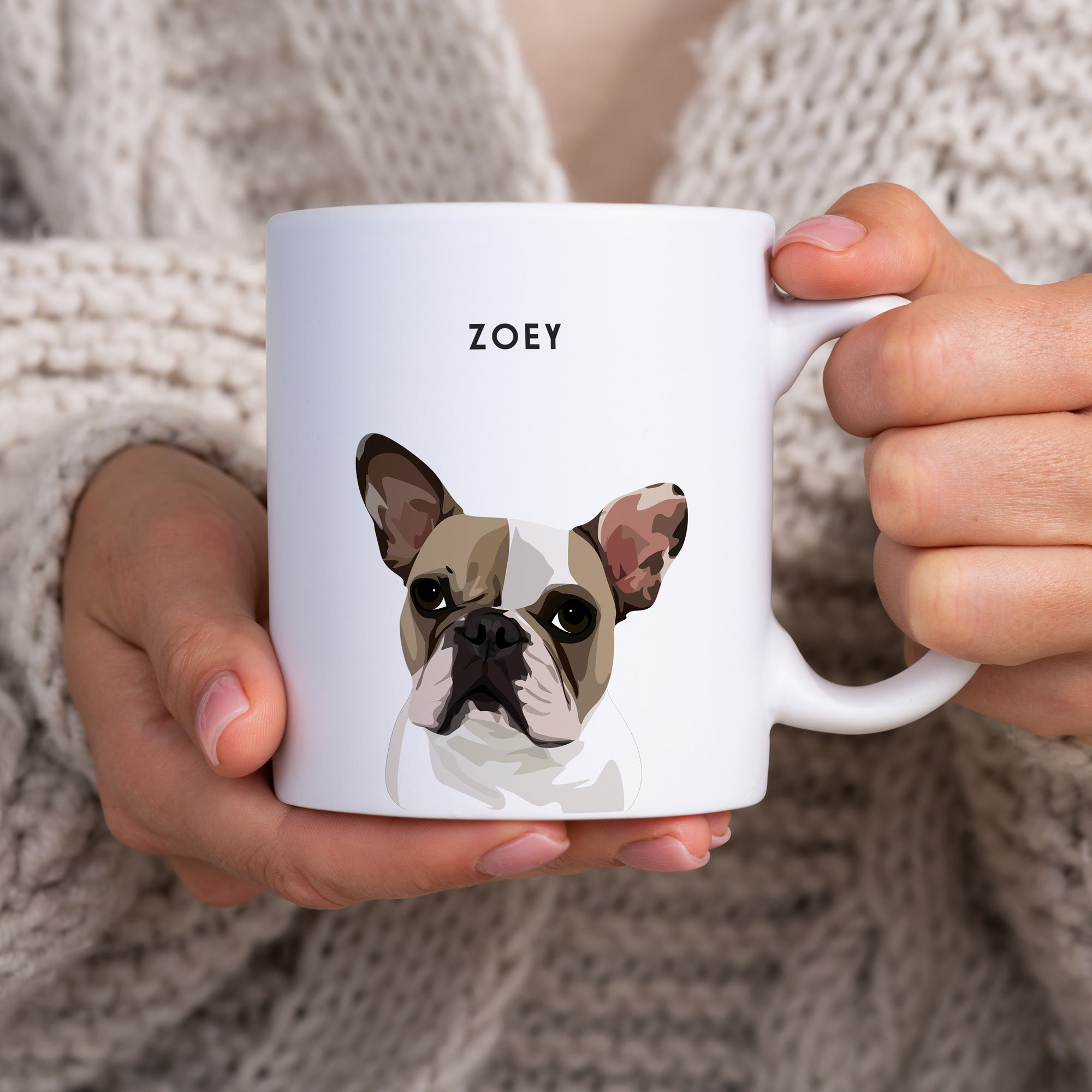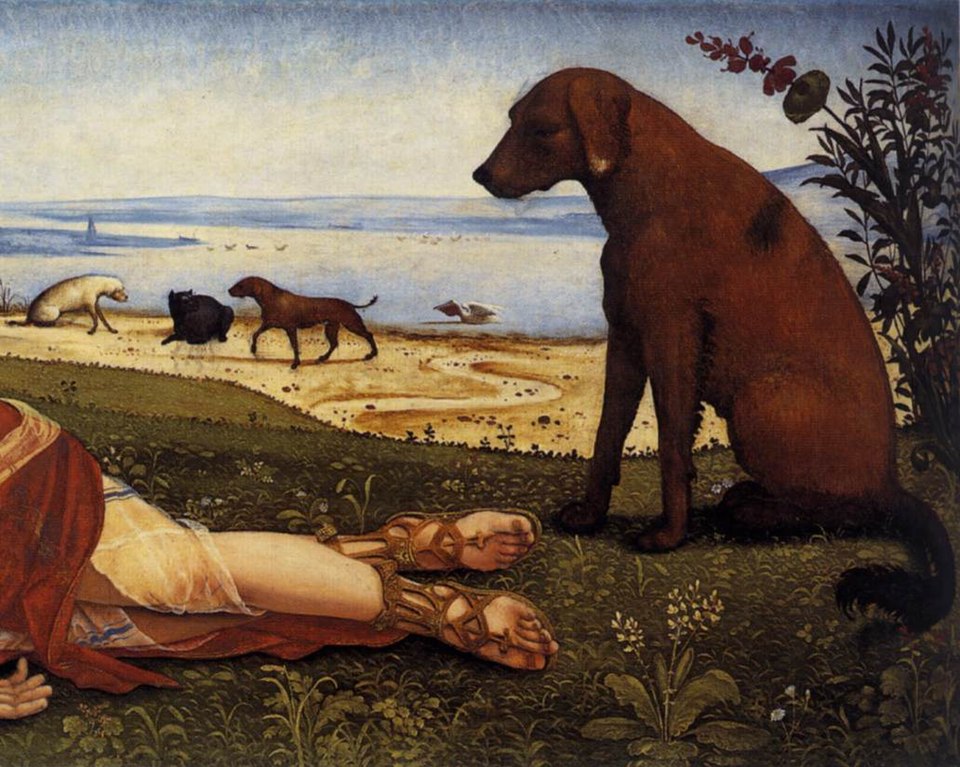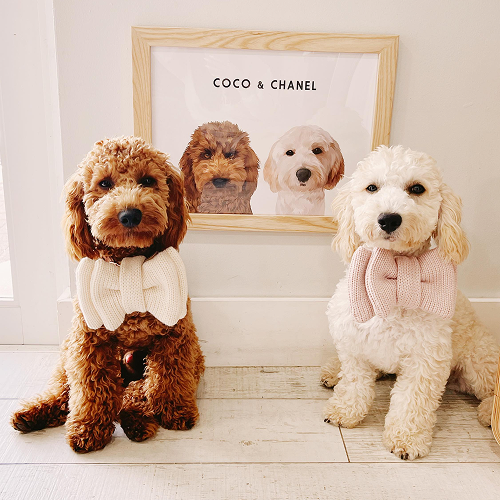Dogs in mythology are often depicted as powerful guardians, soul guides, and divine companions—bridging the realms of life and death. From Cerberus in Greek legend to Anubis in Egyptian lore and Foo Dogs in Chinese tradition, these legendary canines reflect the deep symbolic roles attributed to them throughout history. Their enduring presence reminds us that our furry friends have long been more than pets—they’re protectors, symbols, and sometimes even celestial beings.
1. Dogs as Guardians of the Underworld
Throughout history, many mythologies have depicted dogs as guardians of the underworld or protectors of the realms of the dead. These fierce and loyal canines are more than just watchful eyes—they serve as spiritual bouncers, gatekeepers of otherworldly realms, and defenders of the cosmic order. Their presence helps maintain the delicate balance between life and death, keeping order in the spiritual world and ensuring that no soul takes a wrong turn on its final journey.

By Eagle Painter - User:Bibi Saint-Pol, Own work, 1 June 2007, Public Domain, https://commons.wikimedia.org/w/index.php?curid=2192736
Cerberus (Greek Mythology)
One of the most iconic mythological dogs, Cerberus is the three-headed hound who stands sentry at the gates of Hades. His appearance alone is enough to send shivers down any mortal's spine—each of his three heads is said to represent loyalty, ferocity, and vigilance, while his serpent-like tail and mane of snakes make him a creature straight out of a nightmare.
But Cerberus isn’t just scary—he serves a vital role in keeping the Underworld secure. No soul escapes on his watch, and no living being dares to enter. He is Hades’ ultimate bodyguard and the embodiment of unwavering protection in its most intense, no-nonsense form.
Key Myth: Heracles’ Twelfth Labor involved capturing Cerberus and bringing him to the surface without using weapons. This feat tested not only Heracles’ strength and courage but also his ability to face death itself. That’s one dog-walking assignment we wouldn’t want to take on.

By Johannes Gehrts - Felix Dahn, Therese Dahn, Therese (von Droste-Hülshoff) Dahn, Frau, Therese von Droste-Hülshoff Dahn (1901). Walhall: Germanische Götter- und Heldensagen. Für Alt und Jung am deutschen Herd. Breitkopf und Härtel., Public Domain, https://commons.wikimedia.org/w/index.php?curid=4624357
Garmr (Norse Mythology)
In the chilling tales of Norse mythology, Garmr is the terrifying hound that guards the gates of Helheim, the land of the dead. Described as blood-stained and relentless, he waits in silence—until Ragnarok arrives. When that apocalyptic moment comes, Garmr breaks free of his chains and clashes with the god Tyr in a final, fatal battle that brings about the end of the world.
Garmr’s story isn’t just one of brute force. He’s a symbol of fate fulfilled, of loyalty taken to its extreme—so much so that it becomes destructive. As the inevitable doom approaches, Garmr doesn’t shy away from his destiny. Instead, he charges into it, snarling and fearless. He represents the darker edge of duty—the part that says, "Even if the world is ending, I’ve got a job to do."

By Loukus999, CC0, https://commons.wikimedia.org/w/index.php?curid=157601561
Xolotl (Aztec Mythology)
Unlike the terrifying hounds of Greek and Norse legend, Xolotl is a more compassionate figure—though no less powerful. In Aztec mythology, Xolotl is the dog-headed god of lightning, fire, deformity, and death. As the twin brother of Quetzalcoatl (the feathered serpent god), Xolotl serves as the guide for souls journeying through Mictlan, the treacherous nine-level Aztec underworld.
This journey isn’t easy—there are rivers to cross, mountains to climb, and winds that try to blow you away. But Xolotl doesn’t abandon you. He leads souls step by step, making sure they reach their final destination safely. Often depicted as a dog with backwards feet or a skeletal face, Xolotl is a guardian of transformation and transition.
He reflects the deeply held belief that dogs are more than earthly companions—they’re spiritual protectors who walk with us through life’s most profound changes, right up to (and beyond) our final breath.
2. Divine Companions and Protectors
Not all legendary dogs were guarding gates or guiding souls through shadowy realms. Some stood proudly by the sides of gods, heroes, and emperors—fierce protectors, faithful friends, and magical beings in their own right. These divine companions didn’t just sit and stay—they transformed destinies, defended sacred spaces, and left paw prints across the heavens.

By Piero di Cosimo, Public Domain, https://commons.wikimedia.org/w/index.php?curid=14405214
Laelaps (Greek Mythology)
Laelaps wasn’t your average hound—he was a magical dog gifted with one very special power. He never failed to catch whatever he was chasing. Talk about a fetch champion. In a myth that reads like a cosmic riddle, Laelaps was set to hunt the Teumessian fox, a creature destined never to be caught. An unstoppable force chasing an uncatchable target? Zeus had to step in and put an end to the paradox. His solution? He turned both Laelaps and the fox into stone, then placed them among the stars.
Now their chase continues eternally in the night sky, as constellations. Laelaps reminds us that persistence is powerful—even when the odds are impossible.

Leonard G. at English Wikipedia. - Transferred from en.wikipedia to Commons by IngerAlHaosului using CommonsHelper., CC SA 1.0, https://commons.wikimedia.org/w/index.php?curid=9015454
Foo Dogs (Chinese Tradition)
Though they’re called “dogs,” Foo Dogs are actually lion-like guardians rooted in ancient Chinese tradition. You’ll often see them flanking the entrances of temples, palaces, and even some homes—massive stone statues with fearsome expressions and intricate detailing. They’re always placed in pairs, with the male holding a ball (symbol of power) and the female cradling a cub (symbol of nurturing).
Together, they guard against negative energy and welcome prosperity. They’re fierce but noble, fierce-looking but deeply symbolic—sort of like a serious-faced pup who’s secretly a big softie.
In modern times, Foo Dogs have become beloved cultural symbols around the world, offering protection and positivity. Think of them as ancient watchdogs who never sleep.

By Sawaki Suushi (佐脇嵩之, Japanese, *1707, †1772) - scanned from ISBN 4-3360-4187-3., Public Domain, https://commons.wikimedia.org/w/index.php?curid=2431167
Panhu (Chinese Folklore)
Panhu is one of the most fascinating figures in Chinese mythology. He was a dragon-dog hybrid who loyally served an emperor, performing heroic feats on the battlefield. After winning a great victory, Panhu was promised a bride from the royal family. To marry her, he underwent a magical transformation into a human form.
Panhu’s story is one of devotion so deep, it rewrites the rules of nature. His loyalty, bravery, and love earned him not only a royal marriage but also the lasting honor of being revered in multiple ethnic legends and festivals.
Panhu shows us that dogs aren’t just protectors—they’re shape-shifters, peacemakers, and sometimes, royal in-laws.
3. Dogs as Guides Between Worlds
In many mythologies, dogs aren't just earthly companions—they’re sacred escorts for the soul, leading the way through liminal spaces where life and death blur. When the path grows uncertain, these wise and watchful canines step in to guide us. With paws firmly planted in both realms, they help bridge the mortal and the divine.

By Hunefer - http://www.britishmuseum.org/explore/highlights/highlight_objects/aes/p/page_from_the_book_of_the_de-1.aspx, https://www.webcitation.org/63YCN7sEt, Public Domain, https://commons.wikimedia.org/w/index.php?curid=41021906
Anubis (Egyptian Mythology)
Anubis, the jackal-headed deity of ancient Egypt, is probably one of the most iconic underworld figures. Associated with mummification and funerary rites, Anubis plays a critical role in preparing the dead for their journey and guiding them safely through Duat, the Egyptian underworld. He stands at the scales of justice, where a soul’s heart is weighed against the feather of Ma’at to determine its fate.
With his black jackal features symbolizing both decay and rebirth, Anubis embodies the divine guidance we all hope for in our final moments—a spiritual shepherd with an eye for truth and a heart for balance. He reminds us that dogs don't just walk beside us in life—they wait for us when it's time to cross over.

By Netbios - Arman Torkzaban,آرمان ترکزبان, CC0, https://commons.wikimedia.org/w/index.php?curid=23551850
Four-Eyed Dogs (Persian Mythology)
In Zoroastrian tradition, four-eyed dogs are the sacred guardians of the Chinvat Bridge—the mythical crossing between the living world and the afterlife. These dogs, often interpreted as having two spots above their eyes (creating the illusion of four eyes), are believed to see what others cannot.
When a soul approaches the bridge, these wise pups evaluate its worthiness, ensuring only the righteous pass safely to the other side. They’re protectors of the soul's final journey and vigilant judges of character, offering clarity when the stakes are sky-high.
The idea that dogs see more than meets the eye isn't just poetic—it’s ancient wisdom wrapped in fur and loyalty. Honestly, if anyone’s going to decide my fate in the afterlife, I hope it’s a fluffy, four-eyed good boy with a fair sense of judgment and maybe a treat in paw.
4. Dogs in Celtic and Norse Folklore
Now let’s pad our way into the mist-shrouded forests and stormy coastlines of Celtic and Norse mythology—where dogs don’t just bark, they echo across realms. In these ancient stories, canines often appear as eerie omens, soul shepherds, or supernatural sentinels. Whether guiding spirits or guarding the unknown, they leave a paw print on the otherworldly side of folklore.

Celtic fairy hounds - the Cŵn Annwn (© Roger Garland)
Cŵn Annwn (Welsh Mythology)
Cŵn Annwn (pronounced "coon an-noon") are no ordinary hounds. These spectral dogs are ghostly white with flaming red ears, a chilling combo that instantly marks them as otherworldly. Belonging to Arawn, the ruler of the Welsh Otherworld (Annwn), they’re often heard before they’re seen—howling through the night as harbingers of death or guides for departed souls.
Their presence is a reminder that the boundary between life and death is sometimes as thin as morning fog. In some legends, they lead the Wild Hunt, a ghostly procession racing across the skies. So if you hear distant howling on a cold, windy night... maybe keep your pup close. They embody the mystical and liminal, reminding us that the spiritual world is always just a step—or a paw print—away.

By Inès Lee, CC BY-SA 4.0, https://commons.wikimedia.org/w/index.php?curid=126279013
Black Dogs or Grim (Celtic Folklore)
Black Dogs—also known as the Grim or Barghest in different regions—are perhaps some of the most bone-chilling canines in folklore. These large, spectral dogs are usually jet black, with glowing red or green eyes, and are often spotted near crossroads, graveyards, or ancient ruins. They can be seen as omens of death or disaster, but in some tales, they protect sacred places or lost travelers.
Their appearances are often tied to moments of transformation or warning. Not all encounters are bad news—some legends say the Grim guards churchyards to keep evil spirits out, like a supernatural bouncer with fur. These dogs have inspired countless modern stories, from ghost tales to Sherlock Holmes’ The Hound of the Baskervilles, proving they still capture our imaginations centuries later.
Folklore’s favorite surprise twist? A glowing-eyed pup standing in the mist, deciding whether you're friend or foe.
5. Dogs in Religious Contexts
Beyond the thrilling adventures and mythological battles, dogs have also held sacred and symbolic roles in religious traditions across the globe. In these spiritual settings, they’re more than companions—they’re guardians, healers, and divine messengers.
Hinduism and Buddhism
In Hindu and Buddhist traditions, Yama—the god of death and lord of the afterlife—is said to be accompanied by two fearsome but loyal four-eyed dogs. These dogs, often interpreted as having markings above their eyes or possessing spiritual sight, stand guard at the threshold between the mortal world and the afterlife.
They serve as silent watchers of karma and destiny, keeping vigil over the souls transitioning from one life to the next. In rural parts of India and Nepal, dogs are even honored during special festivals like Kukur Tihar, where they’re celebrated as protectors and guides. Imagine an entire holiday where dogs get flower garlands, tasty treats, and loads of love. Honestly, sign me and my pup up.
These divine dogs represent spiritual alertness and the deep trust placed in dogs to guard what matters most—even our souls.
Mesopotamian Cults
In ancient Mesopotamian religions, dogs were deeply connected to the goddesses of healing, especially Gula and Ninisina. These powerful deities were called upon to treat illnesses and injuries, and dogs were often depicted beside them in temple carvings or statues. Archaeologists have discovered dog remains in ceremonial burial sites near temples, suggesting these animals were revered not only as living protectors but also as sacred beings in death. It’s believed that their presence aided healing rituals and protected sacred spaces.
To ancient Mesopotamians, dogs symbolized loyalty and the power to heal—offering comfort, strength, and maybe even a divine tail wag during times of illness.
The Star Connection
Dogs don’t just show up in myths—they shine in the skies too. The star Sirius, famously known as the Dog Star, has played an important role in the stargazing traditions of several ancient civilizations.
To the ancient Egyptians, Sirius’s heliacal rising (its first visible appearance in the morning sky) marked the annual flooding of the Nile, an event crucial for agriculture and survival. They associated the star with the goddess Isis, who was often linked to fertility, rebirth, and divine magic. When Sirius appeared, it was like a cosmic calendar alarm reminding everyone that life was about to bloom again.
The Greeks, on the other hand, connected Sirius with the peak of summer. Its appearance in the sky heralded the sweltering "dog days of summer," when the heat could get so intense that even a dog might prefer to lounge indoors by a fan (relatable, right?).
This powerful celestial connection reinforces the idea that dogs have long been viewed as cosmic guides—loyal companions not just in our homes and stories, but in the very fabric of the universe. They help us navigate not only earthly journeys but celestial rhythms too. It’s like they’ve always had a little piece of the stars in them.
Modern Legacy of Mythological Dogs
These legendary canines have left a lasting paw print on our culture that still shows up in the most unexpected places. From ancient scrolls to your Netflix queue, mythological dogs continue to charm, protect, and spook us in equal measure.
-
Cerberus, the ferocious three-headed guardian of the underworld, has become a pop culture favorite. He’s appeared in everything from Harry Potter and the Sorcerer’s Stone (shoutout to Fluffy) to action-packed video games like Fortnite, where players can channel their inner underworld warrior with a Cerberus-inspired skin.
-
The Hound of the Baskervilles, inspired by tales of spectral black dogs in Celtic folklore, helped cement Sherlock Holmes as a household name and introduced generations of readers to eerie moorland mysteries. That legendary pup gave us one of the most iconic detective stories of all time—and probably caused a few readers to give their own dog a second look in the dark.
-
Foo Dogs, with their lion-dog majesty, are still found flanking entrances to homes, temples, restaurants, and gardens across the world. Whether made of stone, porcelain, or even printed on welcome mats, they continue to serve as protectors, bringing prosperity and peace to those within.
Their enduring presence in modern books, movies, architecture, and art is a reminder that dogs aren’t just pets—they're living symbols of loyalty, bravery, and a bit of magic. Let’s be honest, they’ve earned their legendary status and then some. And if your pup ever stares mysteriously into the distance? Maybe they’re just channeling their inner mythological ancestor.
Legendary Canines From Mythology to Modern Day
Across every culture and era, dogs have held a special place in mythology, acting as protectors, guides, and unwavering companions. Our bond with them is timeless, as is their ability to be both our guardians and our best friends. If these legends prove anything, it’s that our love for dogs transcends time, culture, and even the realms of the living and the dead.
Mythological canines reflect how deeply dogs are woven into the human experience. Their roles in ancient legends aren’t just symbolic—they echo the emotional and spiritual connections people have felt for generations. From the fierce presence of Cerberus to the guiding nature of Anubis and the cosmic symbolism of Sirius, these figures continue to inspire and endure.
Even today, their legacy lives on through modern culture. Myth-inspired characters appear in literature, film, video games, and even home decor, where statues like Foo Dogs still stand as emblems of protection and harmony. These legendary tales remind us that dogs are more than animals—they are timeless companions with a powerful place in our stories, our symbols, and our hearts.
FAQs
Why are dogs so commonly featured in mythology across different cultures?
Dogs have long been companions to humans, making their way into myths and legends as guardians, guides, and protectors. Their loyalty, intelligence, and keen senses made them natural symbols of protection, the afterlife, and the supernatural. Because they have historically played vital roles in hunting, herding, and guarding, many cultures saw them as spiritual beings capable of bridging the realms of the living and the dead.
What is the significance of Cerberus having three heads in Greek mythology?
Cerberus’ three heads symbolize more than just ferocity—they represent different aspects of his role as the guardian of the Underworld. Some interpretations suggest they embody past, present, and future, while others believe they stand for birth, life, and death. The number three often holds mystical significance in mythology, reinforcing Cerberus’ role as an all-seeing, all-knowing sentinel of Hades.
How did Anubis become associated with dogs in Egyptian mythology?
Anubis, the jackal-headed god of mummification and the afterlife, was linked to dogs due to the presence of wild canines in ancient Egyptian burial grounds. These scavengers, often mistaken for jackals, were believed to have a natural connection to death and the beyond. Over time, Anubis came to be depicted with a canine head, reinforcing his role as a guide for souls and a guardian of the dead.
Are there any mythological dogs that were seen as good luck instead of omens of death?
Yes, not all legendary dogs were harbingers of doom! Foo Dogs in Chinese tradition, for example, are symbols of protection and prosperity, guarding sacred spaces from negative energy. Similarly, Panhu from Chinese folklore was seen as a hero who brought fortune to his people. Mythological dogs often had dual roles—while some guarded the afterlife, others ensured blessings and safety in the mortal world.
Do mythological dogs have any influence on modern pop culture?
Absolutely! Many of today’s popular stories, movies, and video games draw inspiration from mythological canines. Cerberus has appeared in everything from Harry Potter to Hercules, while black dogs like the Grim from Celtic folklore influenced The Hound of the Baskervilles and other ghostly legends. Foo Dogs are still widely used as decorative guardians, and Anubis remains a popular figure in Egyptian-inspired fantasy works. These ancient legends continue to shape modern storytelling in fascinating ways.



